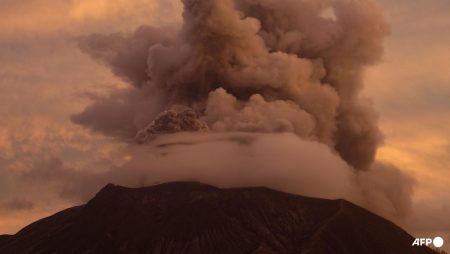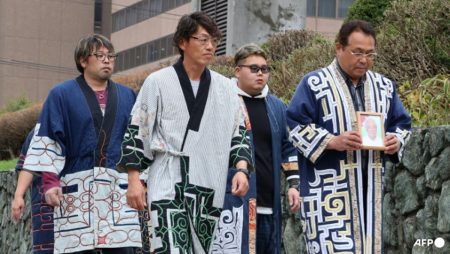years hit the popular national park.
The 6.1-magnitude quake hit eastern Taiwan on Thursday, collapsing a scenic mountain trail, trapping more than 100 people and injuring over 30. The bodies of two women, both in their 20s, were found on the trail, pinned under huge rocks. Rescuers had been struggling to retrieve the bodies due to the difficult terrain and the risk of further landslides. The immediate focus was on bringing in heavy equipment to lift the boulders and safely recover the bodies.
The earthquake struck at the peak of the tourist season in the national park, known for its stunning natural beauty and popular hiking trails. The area was packed with visitors and rescue teams were faced with the challenging task of searching for survivors and victims amidst the debris and unstable ground. The quake also caused landslides and damaged buildings in the region, leaving many roads blocked and hindering access for rescue operations.
The government mobilized over 11,000 soldiers, police officers, and firefighters to assist in the rescue efforts, using helicopters to airlift injured hikers to safety. With hundreds of people evacuated from the area, emergency shelters were set up to provide temporary housing for those displaced by the disaster. President Tsai Ing-wen visited the affected area to oversee the rescue operations and meet with survivors and first responders, pledging government support for the recovery efforts.
The earthquake was the strongest to hit Taiwan in 25 years, causing widespread damage and disruption in the affected region. Schools and businesses were closed, and transportation services were suspended as authorities assessed the extent of the damage and worked to restore normalcy. The quake also raised concerns about the safety of hiking trails in the national park, prompting calls for better monitoring and maintenance to prevent similar tragedies in the future.
As the search and rescue operation continued, authorities warned of the ongoing risk of aftershocks and further landslides in the area. The public was advised to exercise caution and stay away from damaged structures and unstable terrain. The government urged residents and tourists to remain vigilant and follow safety guidelines to avoid further casualties. The disaster served as a stark reminder of the power of nature and the need for preparedness in the face of natural disasters.
In the aftermath of the earthquake, Taiwan rallied together to support those affected by the disaster, with volunteers and organizations offering assistance and donations to help with the recovery efforts. Local communities came together to provide food, shelter, and medical care to those in need, showcasing the resilience and solidarity of the Taiwanese people in times of crisis. The tragedy also sparked discussions about disaster response and preparedness, with calls for improved infrastructure and emergency planning to better protect against future earthquakes and natural disasters.















